Our Most Unusual Pulp Adventure
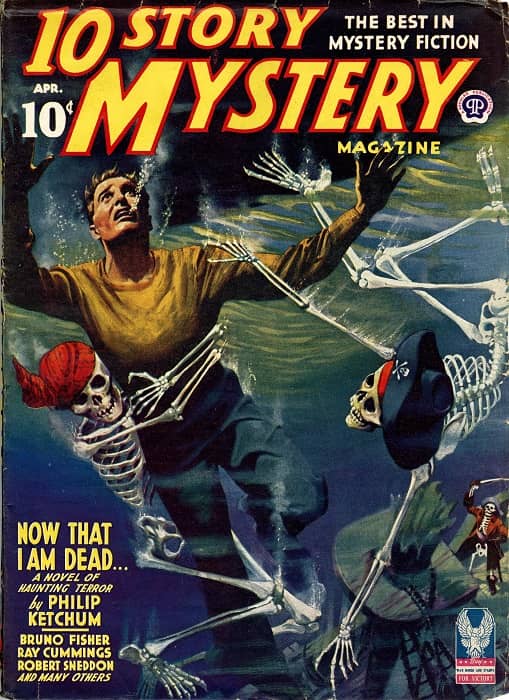 |
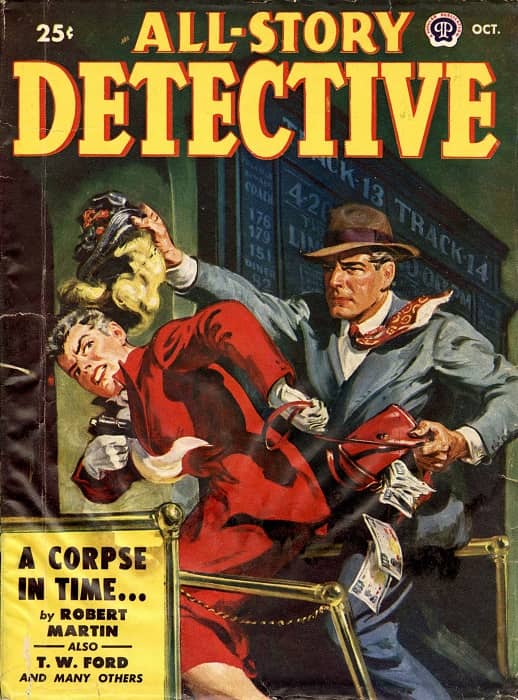 |
10 Story Mystery, April 1943, and The All-Story Detective, October 1949
Based on my experience, I think that non-collectors often view us collectors as somewhat crazy. They just don’t approach things the way we do, particularly when it comes to whatever particular obsession drives us. They don’t understand why we collect, and they don’t understand what we do to collect, and they don’t understand that the desire to collect can often override what most folks would consider to be common sense.
Case in point: Many of my non-collector friends are often horrified when I relate to them the tale of our most unusual pulp collecting adventure.
On a late fall day about 15 years ago, I read an ad in an antiques magazine regarding an upcoming auction in a neighboring state. The auction mentioned pulps and showed a few. So Deb and I got up very early the day of the auction and drove for several hours. The auction was being held in a large, unheated building, and both of us were quite cold the whole time. We’d arrived with enough time to quickly browse through the material – there were several lots of pulps among the hundreds of lots being auctioned, but most of the material was non-genre, everything from tools and hardware to furniture to farm equipment to household items to architectural salvage. None of the pulps were particularly rare, but many were in nice condition.
I think the auction began around 11:00 a.m. Unfortunately, there was no order to it. Whatever item happened to strike the auctioneer’s fancy at any given moment would be auctioned off, with no rhyme or reason as to when something would be coming up. After a while a few pulp lots came up, which I won, but then he moved on to other things, leaving most of the pulp lots still to come. Every hour or so, he’d get to a few more pulp lots, and then switch to something else. Needless to say, it was extremely frustrating.
[Click the images for pulp-sized versions.]
By the time 2:30 p.m. rolled around, I’d won several lots of pulps, but Deb and I were both freezing, and we’d not eaten anything since around 8:00 a.m. that morning. I was hungry, but Deb was starving, and beginning to suggest that I would be taking my life in my hands if we didn’t leave the auction and get something to eat pronto. I promised that we’d leave after the next pulp lots came up, and began praying that this would be soon.
Fortunately, it was soon, and when the dust had settled on those lots, we got ready to blow the auction and grab some food. At this point, another bidder approached us and asked me if I collected pulps. Given that I’d won most of the pulp lots to that point, and was carrying an open box filled with them, it wasn’t a tough guess on his part. I replied that I did. He then mentioned that he’d collected pulps for a few decades and had finally decided to sell some. He asked if we were interesting to going over to his house to look them over.
By now, Deb looked like she was getting ready to gnaw my leg off and we still had a long drive ahead of us. When I mentioned that we needed to head back to Chicago, he told us that his house was on the way. So we agreed we’d follow him to his place, after making a stop at the first drive-through fast food restaurant we found.
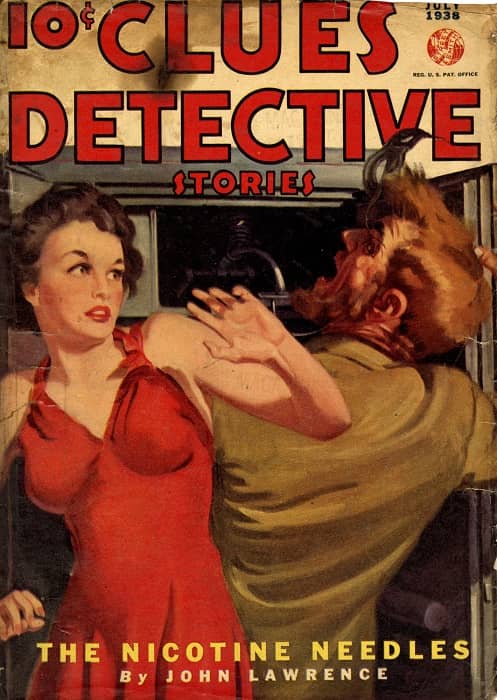 |
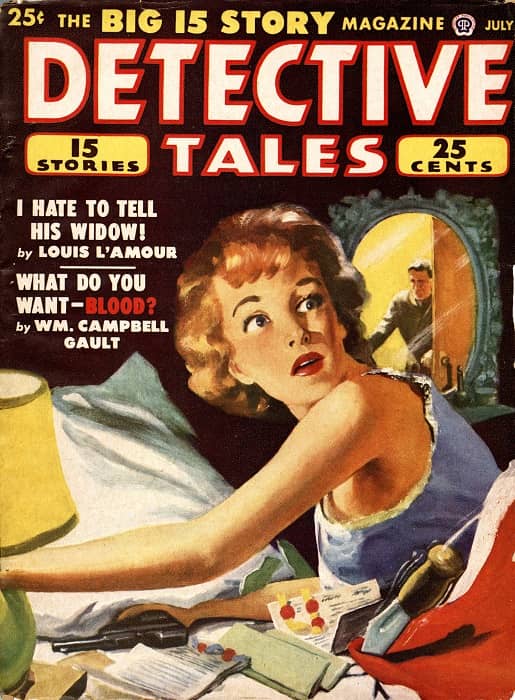 |
Clues Detective Stories, July 1938, and Detective Tales, July 1949
A short time later, fortified by Taco Bell, we found ourselves following him down long country highways, past miles and miles of farmland, in a cold, driving rain. However, he was either directionally challenged or just didn’t know where Chicago was located. Every minute found us heading further and further away from home.
After about half an hour of this, with no end in sight, Deb and I began discussing whether this was a good idea. Yeah, I know, we may have been late getting to that discussion. It’s at this point in the story when most non-collectors tell me, “Hell no, it wasn’t a good idea!” We were following some guy we’d just met, who we knew nothing about and who had approached us, out into the boondocks. We had no idea if he actually had any pulps or not. If we’d been watching characters in a movie doing what we were doing, we’d be yelling at them to turn around while they still could.
On the plus side, he’d given us his address, so we decided to call a friend of ours, Michael, on our cell phone, and tell him what was going on. We told Michael that if he didn’t hear from us by 6:00 p.m. to try to reach us and failing that, to let the police know. Michael took great pleasure in telling us that would be much too late, and kept repeating, “It rubs the lotion on its skin,” from Silence of the Lambs. Proof yet again that we exercise good judgment in selecting our friends.
Nearly an hour into the drive, we finally pulled into a small town and turned down a two-lane side street. A few hundred yards down the street, the two lanes split, forming a large island in the middle, on which stood an old, gothic mansion. I joked to Deb, “Look, it’s the pulp mansion!”, only to see the pulp guy turn into its driveway. We followed him through the opening in the wrought iron fence that surrounded the property. As we pulled up to the house, we could see a curtain falling back into place on the third story, as someone had watched us pull in.
We later learned that house had been built in the 1870’s for a wealthy family, and in its day, the three story edifice must have been an impressive structure. Even 130 years later, it was still imposing, though falling into decay. Our host told us to watch our step as we got to the front porch, which had partially collapsed.
The front door led into the living room. The ceiling was at least 12’ high, and taking up most of one wall was an enormous fireplace, with an opening that was taller than me (at 6’) and even wider than that, over which towered a gigantic mirror that rose to the ceiling. The only piece of furniture in the room was a worn Victorian velvet couch. A gas heater was inset in another wall. I’ve never seen a heater like this before or since. It was basically about a two foot square hole in the wall covered by some type of curved glass, behind which there was a live gas flame. Apparently each room of the house was heated in this fashion.
At this point, our host told us that the pulps were in the basement. Of course they were! We went down a hallway, the doorways off of which were all obscured by sheets tacked to the tops of the head jamb. Getting to the basement door, we were told once more to watch our step, as the stairs were more like a ladder than steps and it would be dark, since the light switch was at the bottom of the stairs.
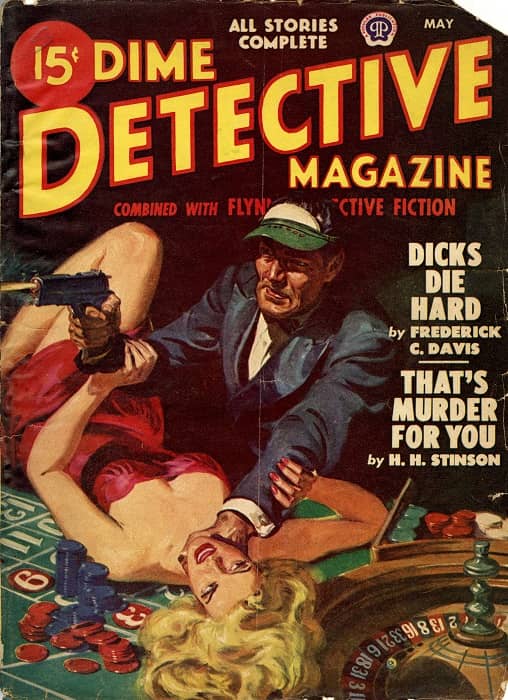 |
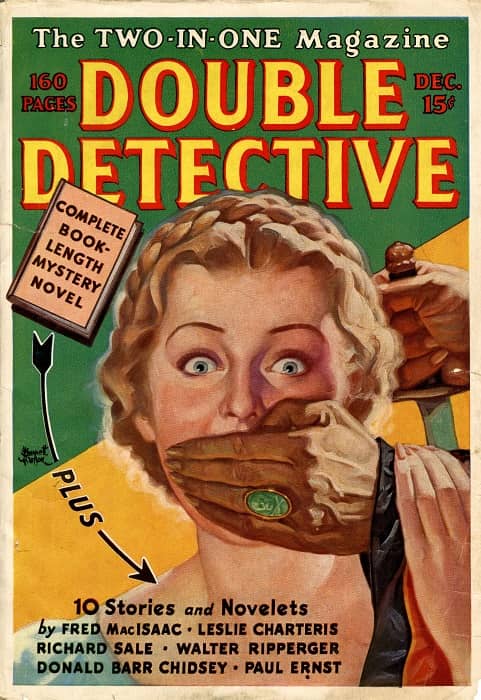 |
Dime Detective Magazines, May 1948, and Double Detective, December 1937
But nothing ventured, nothing gained. We followed our host down the steep stairs, and when the light was switched on it revealed that we were in the mechanicals section of the basement. As in Silence of the Lambs, the walls of the basement were not smooth concrete but rather were made with stones and mortar.
We followed our host through the only doorway, entering a room lined entirely with shelves, floor to ceiling, through which ran a one-person pathway maze of shelves around 3’ high. The shelves were packed with records – LPs, 45s and presumably 78s as well. There were two exits from this room – one was an open entryway on the opposite side of the maze, while the other was a closed door behind which we could hear some noise. We were advised that the pulps were in the next room, but as we walked into the room to navigate the maze, the door opened. Standing in the now-open doorway was a guy sporting a heavy metal t-short, probably in his 20’s, with a bowl-cut hairdo. He stared at us for a moment without saying a word, before closing the door and retreating back inside. Our host informed us, “Oh, that’s my son. He lives in the basement.”
Exiting into the next room, we finally entered the pulp lair. The layout was the same as in the record room, with shelves lining the walls, and a maze of 3’ high shelves throughout the room. The wall shelves were filled with vintage paperbacks, while the maze shelves were loaded with pulps. There was one other exit from this room, which our host explained was devoted to his vintage movie poster and comics collections.
His pulp collection was primarily science fiction and fantasy, with a mix of other genres. He had complete runs of most of the SF pulps, including Astounding and Amazing, and he was very proud to show me what he’d done to the early years of those titles to help preserve them. He’d carefully cut the covers off and peeled the spines off. He then glued the covers and spines to manila folders, which he’d cut down to size and then glued the folders to the pulps. He felt that this would help keep them in good condition for decades to come. Certainly his first several years of Amazing Stories (including the first issue), his Amazing Stories Annual, and his complete run of the Clayton issues of Astounding Stories of Super-Science were in nice shape, other than this modification. I didn’t have the heart to tell him that this desecration had completely destroyed their value.
Fortunately, most of the pulps had escaped this well-intentioned defacement, including his mystery and G-men pulps. Those were the ones he’d decided to sell. After some negotiation, I bought them all, adding up to several long comic book boxes worth. The pulps shown in this article are some of the ones I picked up from him.
Loading the truck up (and being careful as we navigated the steep basement stairs and decaying porch stairs while carrying full long boxes), we said our goodbyes. Hitting the road just before 6:00 p.m., we called Michael to tell him we were still among the living and on our way back home. He professed to be surprised, claiming that he had never expected to hear from us again. When I’ve told other non-collector friends this story, they often share his viewpoint and tell us we’re nuts.
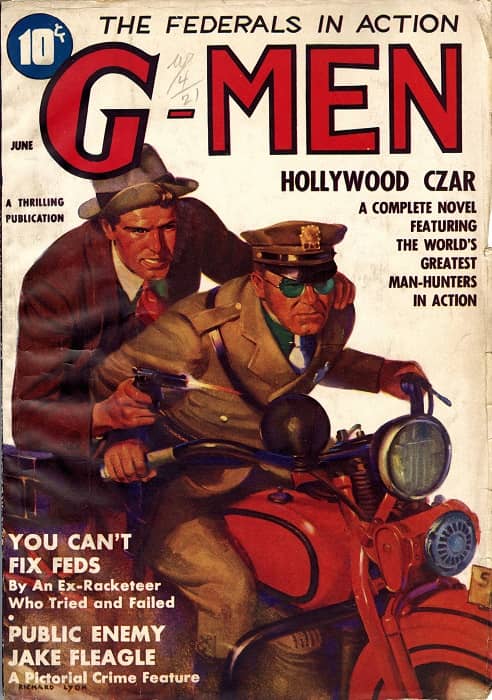 |
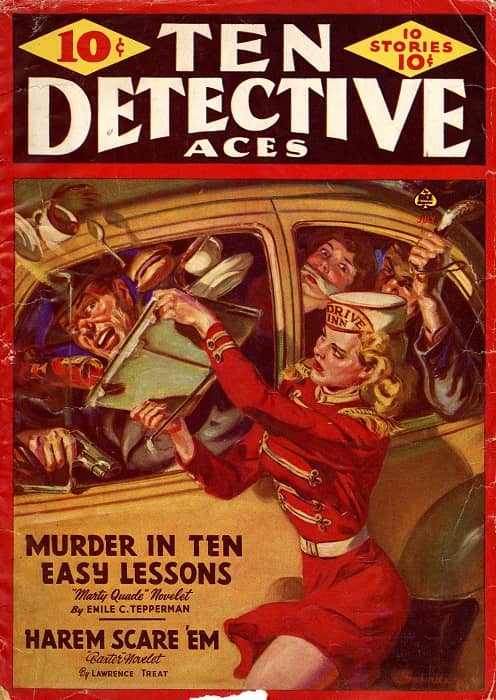 |
G-Men, June 1936, and Ten Detective Aces, July 1941
It was probably the most unusual pulp collecting adventure we’ve had. Even though I’ve bought larger collections, I’m not sure we’ll ever top several aspects of this one.
And we never did find out who had watched us from the third floor window as we pulled into the driveway.
Doug is a collector of pulps, as well as of pulp, science fiction and fantasy art. He co-founded and co-organizes the Windy City Pulp and Paper Convention. For many years his Tattered Pages Press published the pulp fanzine Pulp Vault, as well as other books on the pulps. He was one of the authors of The Adventure House Guide to Pulps, and has edited several pulp anthologies, including the Best of Adventure series. His book, Uncovered: The Hidden Art Of The Girlie Pulps, an in-depth study of the spicy pulps and their art, was named ForeWord Magazine‘s 2003 Popular Culture Book of the Year. In 2013, Bob Weinberg, Bob Garcia and he collaborated on The Collectors’ Book of Virgil Finlay, a collection of Finlay’s gorgeous art. The Art of the Pulps, which he co-edited with Bob Weinberg and Ed Hulse, won the 2018 Locus Award for Best Art Book.
Doug’s last article for Black Gate was The Burroughs Boom
What a Fantastic, Amazing and Astounding story. Being a collector of pulps I share your passion.